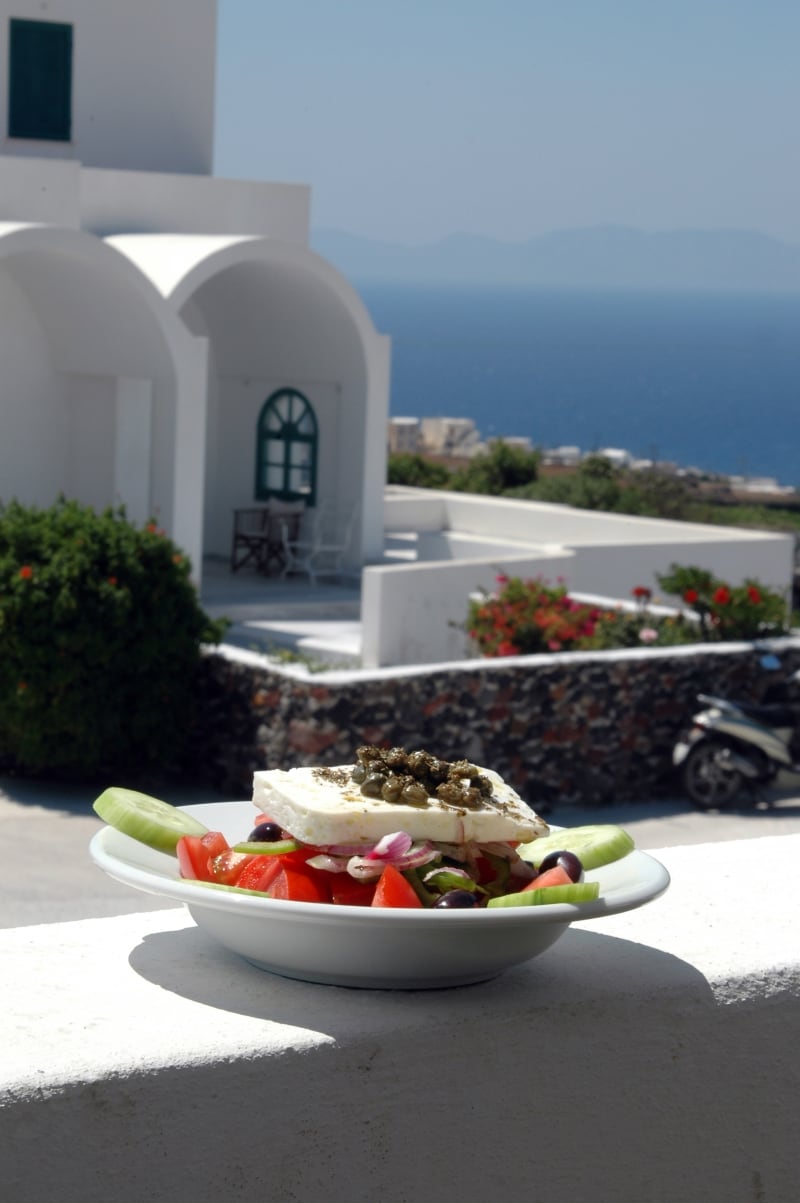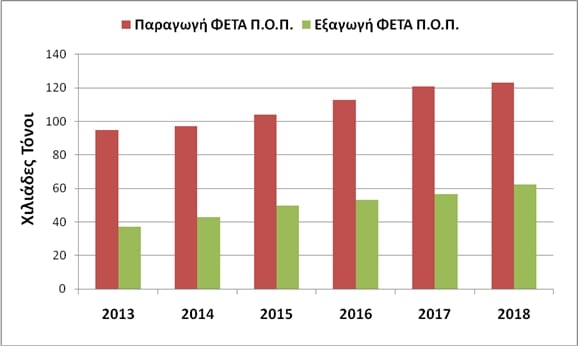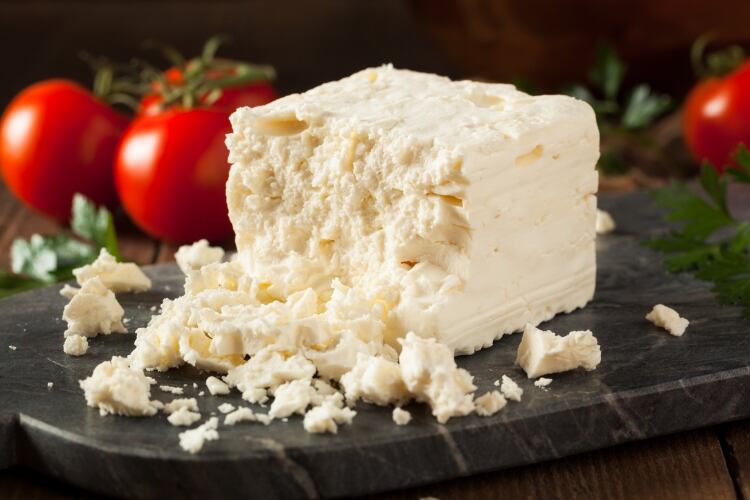DairyReporter spoke with ELGO, the Hellenic Agricultural Organization “Demeter,” about its role in the industry.
Could you tell me what ELGO is and what it does? How many dairy products does ELGO have responsibility for?
ELGO is the Greek public Authority responsible inter alia:
- To verify compliance of a PDO or PGI product with a product specification before placing the product in the market;
- To verify the correct use of registered names, national and European symbols and indications on labels;
- For controls on each operator (producer, packaging firms, firms producing private label products) of PDO or PGI products;
- For certification or withdrawal of certification of producers/packers/private label firms of PDO or PGI products;
- For market controls aimed at detecting and suppressing misuse, counterfeiting, or other practices that mislead the consumer as to the true origin of a product;
- To keep a register of certified producers/packers/private label firms of PDO or PGI products, and;
- To promote quality Greek agricultural products.
Greek PDO & PGI products
Greece ranks fifth among countries with registered GIs, according to the official European Committee site for PDO and PGI products .
In Greece we have registered 107 products as GIs. More specifically, 76 PDOs and 31 PGIs:
- 30 olive oils
- 21 cheeses (PDO)
- 34 fruits, vegetables, nuts
- 11 olives
- 2 meat
- 9 others
What kind of activities in the dairy industry is ELGO involved in?
ELGO, among other things, is also responsible for controls on the milk production-distribution chain in the country.
ELGO performs controls on all enterprises concerning the proper use of milk; performs laboratory analysis on milk quality; keeps a record of milk collecting cooperatives, buyers and producers of milk.
Also, ELGO manages the raw milk production data, informs the Ministry of Rural Development and Food, on issues related to the production and distribution of Greek milk.

Could you summarize what the situation is with regard to the GI designation of Feta, and how that applies globally?
Feta cheese is produced in Greece only.
It is produced exclusively from sheep's milk or from sheep's and goat's milk (goat's milk up to 30% max). No cow’s milk is used!
Feta is the name of the most popular traditional cheese in Greece and perhaps the most famous Greek product abroad. The history of Feta starts from Homer times (8th century B.C) and reaches to the present day.
It has been and continues to be an essential component of the Greek diet and is inextricably linked to the daily life and culture of the country. It is an integral part of Greece's cultural identity and its historical tradition and is much more than a branded, exportable product. Feta greatly supports the economies of many mountainous and disadvantaged areas of the country and helps to keep the population in the countryside and its development, as hundreds of thousands of Greek families are directly or indirectly involved in its production.
The PDO “Feta” is used exclusively for cheese traditionally produced in a defined geographical area of Greece, from sheep's milk or a mixture with goat's milk (up to 30%) in that region. It is produced from milk obtained from local sheep breeds. and goats adapted to the Feta production area, whose diet is based on the flora of the area's pastures. The quality of goat's and ewe's milk, together with the experience of the cheese-makers, has resulted in the most internationally famous Greek cheese which is Feta.
PDO Feta has been protected in the European Union from 2002 with the Regulation 1829/2002 (L 277) and through Free Trade or Association Agreements of the EU in many third countries, all over the world (i.e China, Japan, Singapore, Mercosur, S. Korea, Switzerland, Central America, Colombia & Peru, Viet Nam, Ukraine, Georgia, Western Balkans, Canada, South Africa, Moldova, Iceland, etc.). Some of these agreements are already in force and some have been concluded but they are not in force yet.
PDΟ Feta is not just a Geographical Indication for Greece but it is the mainstay of livestock, as 80% of sheep and goat milk production is directed to Feta production, which amounts to 123,000 tonnes per year (2018). This issue is crucial for our country because Feta supports over 100,000 families of farmers, the highest number in the country and has the potential to become a pillar of livestock development in the coming years, based on global demand which increases continuously.
According to the Study of European Commission “Value of production of agricultural products and foodstuffs, wines, aromatised wines and spirits protected by a geographical indication (GI)”(2012) as regards the importance of agricultural products and foodstuffs in general Greece was at the 7th rank among the 27 EU MS. Greek GI production mainly consisted of cheese (around three quarters), wine (less than 20%), spirits (less than 10%) and olive oil (less than 5%).
Cheese was the most important sector in terms of EU sales value (40% of agricultural and foodstuffs scheme sales value. GIs in Italy, France and Greece accounted for 90% of the EU sales value and 88% of sales volume in cheese sector. Greece ranked third accounted for 11% in the total sales value of cheeses under GI because of FETA Cheese.
During the last six years, there has been an increase in production by 28.3 thousand tonnes (23.0%), followed by a significant increase in exports by 40.6% (25.3 thousand

tonnes) as shown in the graph to the right. (Production on red bars, Exports on green bars, in thousand tonnes)
The protection of Feta in the negotiations of the EU with third countries is ranked very highly in Greece’s political agenda and is one of the most important criteria for the endorsement of the negotiations’ results and the acceptance of the agreement.
What is the program for promotion of Feta cheese, and how is it progressing? How does NOVASERT fit into this relationship?
ELGO implements two three-year-long programs, for the promotion of Feta (co-financed by the EU), with a total budget of €6m. The program’s main aim is for Feta cheese PDO to be well-recognized by consumers and as a result, to raise the demand for it. The consumers need to be aware that the GI products have special features due to the specific environmental and climate conditions of the geographical area where they are produced and also that they are strongly linked to the local traditions and gastronomic culture.
The program’s executive body is "NOVASERT Ltd" and was selected through a competitive procedure.
The target markets of the promotional programs are the following:
• Germany, the UK and France, with a total eligible cost of €2.9m and EU financial contribution of 75%;
• US and Canada, with a total eligible cost of €3.37m and EU financial contribution of 85%.
The action’s main objectives for Germany, the UK and France are to provide information and raise awareness by 20% among the target audience about the fact that Feta PDO is the only authentic Feta and as such it is produced in Greece; and to achieve at least a 48% increase in Feta PDO exports in the three target-markets as a whole.
The action’s main objectives for the US and Canada are to provide information and raise awareness by 30% among the target audience about the fact that Feta PDO is the only authentic Feta and as such it is produced in Greece, and to achieve a 107% (vs 2016) increase in Feta PDO exports to the target markets, which have an already flourishing white brine cheese category, flooded with feta imitations (about 98% of white cheese in brine consumption in the US per year), and where Feta PDO exports are steadily growing (average yearly growth in volume from 2014 to 2016: more than 13% in the USA, more than 2% in Canada).
The Feta PDO market is still a niche market (compared to the very wide Feta-style market), but with high growth rates, consisting a perfect momentum for Feta PDO to seize and multiply its effects.
The program implementation started on June 1, 2018 and ends on May 31, 2021. To date, the following actions have been implemented:
• PR activities include distribution of a press kit to opinion leaders, culinary journalists, food and lifestyle bloggers and nutrition specialists, press releases, media clipping etc. The objective is to inform the public about Feta PDO.
• Press Events were organized in Paris, London, Cologne, New York and Toronto.
• Creation of a website for the promotional campaign for each target country. Official internet presence for attraction of target audiences and forwarding to Facebook, Instagram and YouTube accounts, information, communication, brand awareness and questionnaires (@fetapdo for Europe and @eufetacheese for US and Canada).
• Stands at trade fairs: SIAL, Paris, October 2018; IFE, London, March 2019; ANUGA, Cologne, October 2019; Winter Fancy Food Show, San Francisco, January 2019.
• Workshops in chef schools
• Cooking classes for amateur chefs / foodies
• Special offer week in restaurants in Paris, London, Munich, Cologne, Dusseldorf, New York.
• Study trips to Greece.
• Point-of-sale (POS) promotion in supermarkets.
Similar activities are planned for the second and third year of the program.

